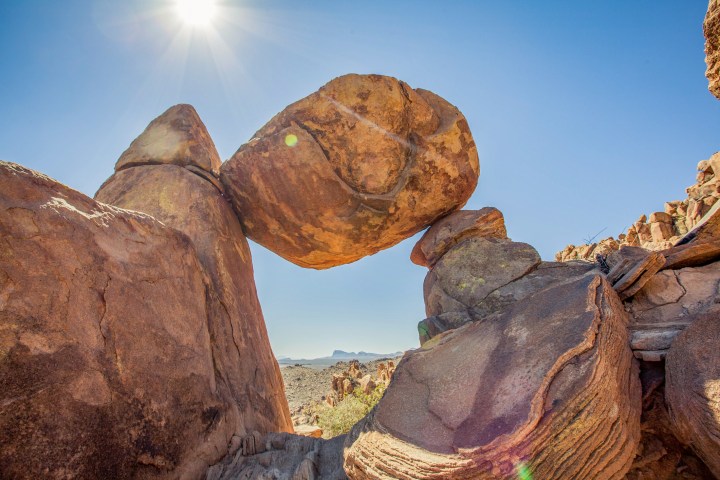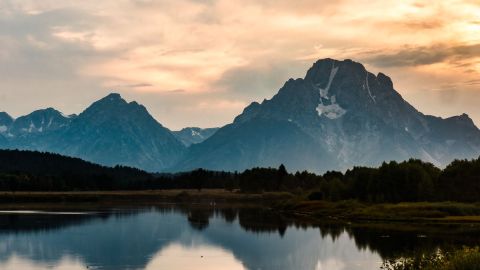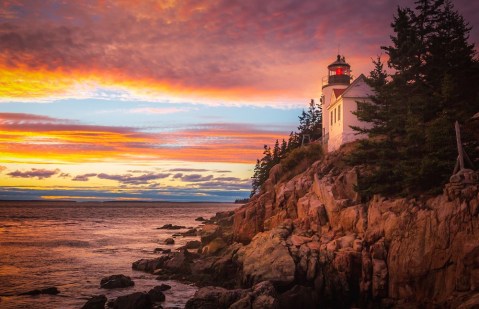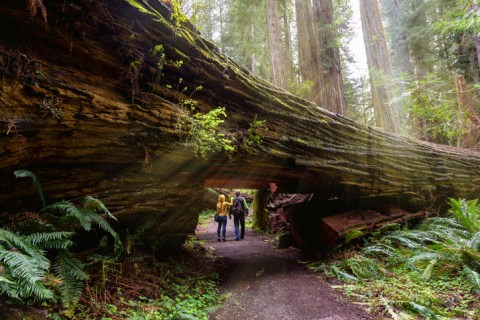Big Bend National Park: Explore Dramatic Canyons And Impressive Mountain Peaks In Texas
If you’ve never visited Texas, it’s impossible to truly comprehend just how massive it is. As a result, this single state has incredible diversity when it comes to the natural landscape, featuring everything from gulf coastlines, grasslands, and forests to the deserts that is most commonly associated with the state. When it comes to this desert region, few places are as rugged, remote, and downright gorgeous as Big Bend National Park. Here’s everything you need to know about Big Bend National Park and why it absolutely deserves a spot on your bucket list.













For more information about planning your trip to Big Bend National Park in Texas, visit the NPS Website.
General Information:
Accessibility: The park’s main visitor centers at Panther Junction, Chisos Basin, Persimmon Gap, Rio Grande Village, and the Fossil Discovery Exhibit each offer reserved parking and accessible ramps. In each visitor center, restrooms, book shops, water fountains, and exhibits are wheelchair-accessible.
Cottonwood Campground does not have campsites that are designated as accessible, though some are level and able to be used by people in wheelchairs. The vault toilets are wheelchair accessible. Chisos Basin Campground offers one site and restroom that are both fully accessible for people in wheelchairs and other flat sites that may be suitable for visitors with mobility difficulties. Rio Grande Village Campground offers one fully accessible site and adjoining restroom, and others nearby that are flat and may be suitable for visitors with mobility issues. Accessible campsites are reserved for disabled guests until 6 p.m. each night.
The Rio Grande Village Nature Trail Boardwalk, Panther Path Trail, and the Window View Trail each offer short wheelchair-accessible hikes.
Park-permitted outfitters such as Big Bend River Tours, Desert Sports, Rio Aviation, and Far Flung Outdoor Center offer float trips and scenic flight tours, and they are able to accommodate disabled visitors with advanced notice.
Throughout the park, accessible vault toilets and program locations offer opportunities for disabled visitors to enjoy the beauty and history of Big Bend National Park. For more detailed information about accessibility in the park, visit the National Park Service website.
Pet Friendly: Most national parks are not extensively pet-friendly, as part of their effort to preserve delicate ecosystems. In Big Bend National Park, pets are not allowed on trails, on the river, or off-roads – meaning your pet can only travel where your car can travel. If you do bring a pet, it needs to be on a short leash (no longer than 6 feet) or in a crate at all times. Pets cannot be left unattended in cars or campers. There are no kennel services in the park. Pet regulation information can be found here.
Parking: Parking is available at visitor centers and trailheads throughout the park. For information on RV or trailer travel, as well as campsite information, visit the park website here.
Seasonal Access: Park entrances and campgrounds are open 24 hours a day, every day. Ranger stations and entrance stations are staffed during various hours. If you arrive after hours, you can self-register at a campground or entrance station.
Cost: Entrance fees to Big Bend National Park range from $15 for individuals on foot or by bicycle to $30 for non-commercial vehicles, and they are valid for seven days. Motorcycles are charged $25 for a seven-day pass as well. Annual passes are available as well, and both the federal Access Pass and America The Beautiful Pass are valid in Big Bend National Park.
Restrooms: You’ll find bathrooms located at each of the visitor centers and campgrounds. Also, vault toilets can be found at the following locations: Boquillas Canyon, Dugout Wells, the Fossil Discovery Exhibit, the Hot Springs area, and Santa Elena Canyon.
Free Park Days: On select days throughout the year, the National Park Service offers fee-free days. Typically, these days are the Birthday of Martin Luther King, Jr., the first day of National Park Week (typically at the end of April), the anniversary of the Great American Outdoors Act on August 4th, National Public Lands Day, and Veterans Day.
Curious to take a peek at this breathtaking national park in Texas? Check out footage of Big Bend National Park below and prepare to be impressed!
Feeling inspired to fill your Bucket List? Check out our previous feature of Hoh Rain Forest in Washington and Acadia National Park in Maine, then subscribe to our weekly Bucket List newsletter to discover new destinations across the country that definitely deserve a visit.
OnlyInYourState may earn compensation through affiliate links in this article. As an Amazon Associate, we earn from qualifying purchases.
More to Explore
Big Bend National Park
What are the best parks to visit in Texas?
Texas is a massive state, and it likely won't surprise you to learn that it's filled with visit-worthy parks. And while national parks are incredible, of course, state parks in Texas are also worth checking out. Below you'll find a list of some of the best state parks to visit in Texas:
- Pedernales Falls State Park (Johnson City)
- Davis Mountains State Park (Fort Davis)
- Franklin Mountains State Park (El Paso)
- Palo Duro Canyon State Park (Canyon)
- Caprock Canyons State Park (Quitaque)
- Big Bend Ranch State Park (Presidio)
- Enchanted Rock State Natural Area (Fredericksburg)
- Seminole Canyon State Park & Historic Site (Comstock)
- Monahans Sandhills State Park (Monahans)
- Garner State Park (Concan)
- Dinosaur Valley State Park (Glen Rose)
- Colorado Bend State Park (Bend)
- Inks Lake State Park (Burnet)
- Lost Maples State Natural Area (Vanderpool)
- Caddo Lake State Park (Karnack)
- Lake Mineral Wells State Park (Mineral Wells)
- Village Creek State Park (Lumberton)
- Bentsen-Rio Grande Valley State Park (Mission)
- Guadalupe River State Park (Spring Branch)
- Longhorn Cavern State Park (Burnet)
Does Texas have any natural wonders?
There are tons of natural wonders to check out in the Lone Star State. Some of the best natural wonders in Texas include the following:
- Padre Island National Seashore
- Enchanted Rock (Fredericksburg)
- Hamilton Pool Preserve (Dripping Springs)
- Jacob's Well (Wimberley)
- Big Bend National Park
- Caddo Lake State Park (Karnack)
- Palo Duro Canyon State Park (Canyon)




